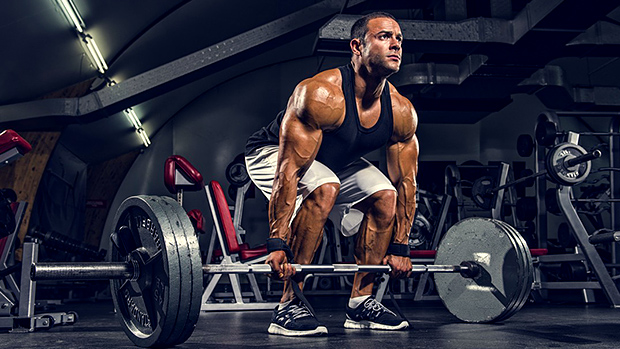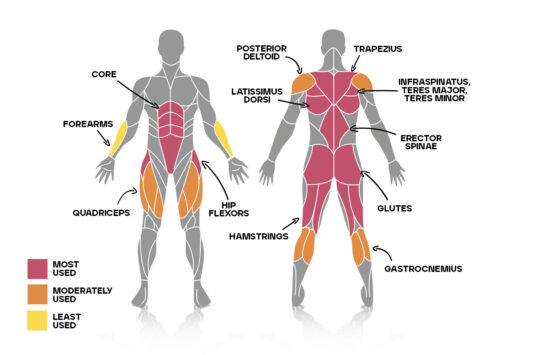Deadlifts – Unveiling the Power of the Deadlift: A Complete Guide
Introduction to the Deadlift

When it comes to strength training, few exercises rival the deadlift in terms of its effectiveness and comprehensive benefits. The deadlift is a compound movement that engages multiple muscle groups while promoting overall strength and functionality. In this blog post, we will delve into the art of deadlifting – from perfecting your form to understanding the muscles worked and the remarkable advantages this exercise brings to the table.
The Deadlift: Technique and Execution
Mastering the deadlift begins with mastering its technique. Here is a step-by-step guide to performing a deadlift with proper form:
- Setup: Stand with your feet hip-width apart, with the barbell over the middle of your feet. Your shins should be close to the bar. Grip the bar just outside your knees, using an overhand or mixed grip (one hand overhand, one hand underhand).
- Grip: Your hands should be about shoulder-width apart. Your grip strength is crucial here – engage your lats by imagining you’re trying to bend the bar around your legs.
- Position: Bend at the hips and knees, lowering your body until your shins touch the bar. Your back should remain flat, with your chest up and your core engaged. Keep your head in a neutral position.
- Lift: Push through your heels, engaging your glutes and hamstrings as you stand up. The barbell should move close to your body. Straighten your hips and knees simultaneously. Stand tall with your shoulders back at the top of the movement.
- Lowering: To lower the bar, hinge at the hips and bend your knees while maintaining a flat back. Keep the bar close to your body as it descends.
Muscles Engaged in Deadlifts
The deadlift is a true full-body exercise, engaging various muscle groups to work in harmony:

- Erector Spinae: These muscles run along your spine and are responsible for keeping your back straight during the lift.
- Glutes: The gluteus maximus is a prime mover in hip extension during the lifting phase.
- Hamstrings: These muscles aid in hip extension and knee flexion during the lift.
- Quadriceps: The quads are engaged to assist in straightening the knees.
- Core: Your core muscles stabilize your spine throughout the lift.
- Lats and Upper Back: These muscles help keep the bar close to your body.
- Forearms and Grip: Your grip strength is essential for holding onto the barbell.
Benefits of Deadlifts
- Strength and Muscle Growth: Deadlifts stimulate numerous muscle groups, leading to overall strength gains and muscle development.
- Functional Fitness: This exercise mimics real-life movements, enhancing your ability to lift objects safely and efficiently.
- Posture and Core Stability: Deadlifts promote a strong and stable core, which translates to improved posture and reduced risk of back pain.
- Bone Health: Weight-bearing exercises like deadlifts contribute to bone density and overall skeletal health.
- Hormonal Response: Deadlifts, being a compound movement, trigger a significant hormonal response, including increased testosterone and growth hormone production.
- Calorie Burn: Compound movements like deadlifts elevate your heart rate and contribute to effective calorie burning.
Safety Precautions With Deadlifts
While deadlifts offer an array of benefits, improper form can lead to injuries. Always start with a light weight to practice your form before progressing to heavier loads. If you’re new to deadlifting, consider seeking guidance from a fitness professional to ensure you’re executing the movement correctly.
Deadlifts are considered one of the exercises that are synonymous with strength. Basically, you pick the bar up off the ground. Some folks take that to mean that you should lift the bar off the ground by any means possible, but that is not the absolute truth. All in all, cheating on lifts is okay, but proper form should be paramount when doing any exercise. At any rate, check your ego at the door, ensure you are using proper equipment and form, and enjoy the hell out of deadlifts, and their variations.
Read our post about how to deadlift.
Conclusion
The deadlift stands as a testament to the undeniable power of compound movements in strength training. By incorporating deadlifts into your fitness routine with proper technique, you can unlock a world of benefits ranging from increased strength and muscle growth to enhanced functional fitness and overall well-being. Remember, consistency and proper form are the keys to reaping the rewards of this remarkable exercise.


4 Responses